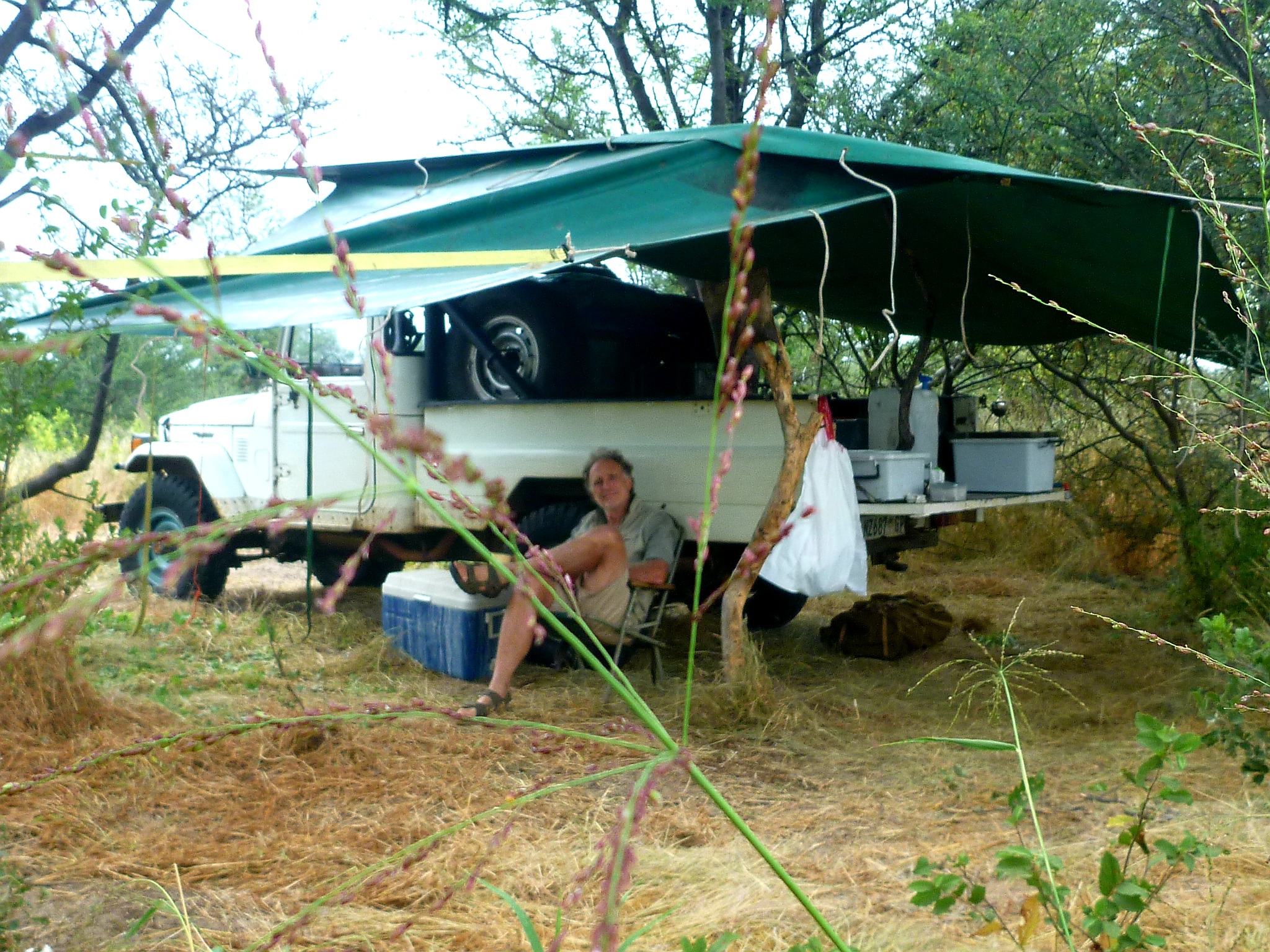You can either read the text below, or listen to the voice recording.
A pleasant morning coffee in my base camp. I had just, the previous afternoon, arrived in the area after four days of breaking through the bush, and I decided to linger here for a few days, maybe a week…
I dislike moving through virgin bush in a vehicle. It reduces the experience of Nature to a mechanical grind that tends to soak up all one’s energy and attention. It is noisy and disruptive to the environment, and on top of that, it is fraught with risks of disabling personal injury or damage to the vehicle – either of which, in the remote wilderness, can be fatal.
But, if one is alone, as I mostly end up being, there is no other way of getting yourself plus your gear and supplies into the area that you want to explore. Truly untouched areas of wilderness are far (and ever further) away from civilisation. To get there, one has to cover great distances, some of it through areas which are quite hostile to vehicles, and where there is no support for something as mechanically complicated as that.
Even after the last hints of vehicle tracks have been left behind, one has to get beyond the influences of those edge-of-civilisation dwellers – usually between thirty to sixty kilometres deeper into the bush. It would be possible, and better, to do this on foot, but not alone; one is simply not able to carry sufficient supplies and equipment on one’s person to spend an extended period in the bush.
My experience in recent years has been that it is increasingly difficult to find people that are sufficiently comfortable in the wilderness to accompany me; not to even mention someone that has a truly deep knowledge of the veld, and can teach me things I don’t already know. I have more or less come to accept that I am on my own on these sojourns, and hence penetrating quite deep with the vehicle is unavoidable.
The untouched wilderness is an endlessly fascinating place for me, but some areas, through an arcane combination of water, topography, and vegetation, are richer than others. When I come across such an area – sometimes by coincidence – I like to spend a few days, maybe even a week, or two, there.
It then makes sense to construct a rudimentary base camp from which I can explore around on morning and afternoon walks, or on sojourns of one, two, even three days, if I knew I could find water in that direction.
I try to find a large tree or group of trees that will provide shade over the hot part of the day – under a tarpaulin in the naked sun it is as hot as a furnace. The shelter needs to be able to withstand gusts of wind, must keep me dry, and must be high enough and spacious enough to be reasonably comfortable for when I am in camp.
With all the equipment and supplies on the vehicle at my disposal, the base camp provides some luxury as a place of rest. It also gives a degree of comfort as a known and relatively safe place to which I can return. Its safety is of course relative. It is open, and I sleep in my hammock, as I would on overnight excursions. The only difference, after all, is the presence of the vehicle and the tarpaulin overhead. But that, as protection, is probably somewhat illusionary. It may initially be unnerving to predators (unless they are familiar with camping humans, as they indeed are in game reserves with unprotected camping sites), but spending an extended time in the same spot means that they will eventually become aware of me, and will come to investigate. They are likely to gradually lose their apprehension through familiarity, and that, in my experience, can bring them ever closer to opportunistic predation. Statistically speaking the base camp is therefore almost less safe than crawling under a dense tangle of bush for a single night’s sleep.
Nonetheless, I cherish it as a place where I can, in a fairly relaxed frame of mind, contemplate my experiences, mentally process my impressions, fill in my diary and even, perhaps, gain perspective on something unpleasant or harrowing that I had encountered.

